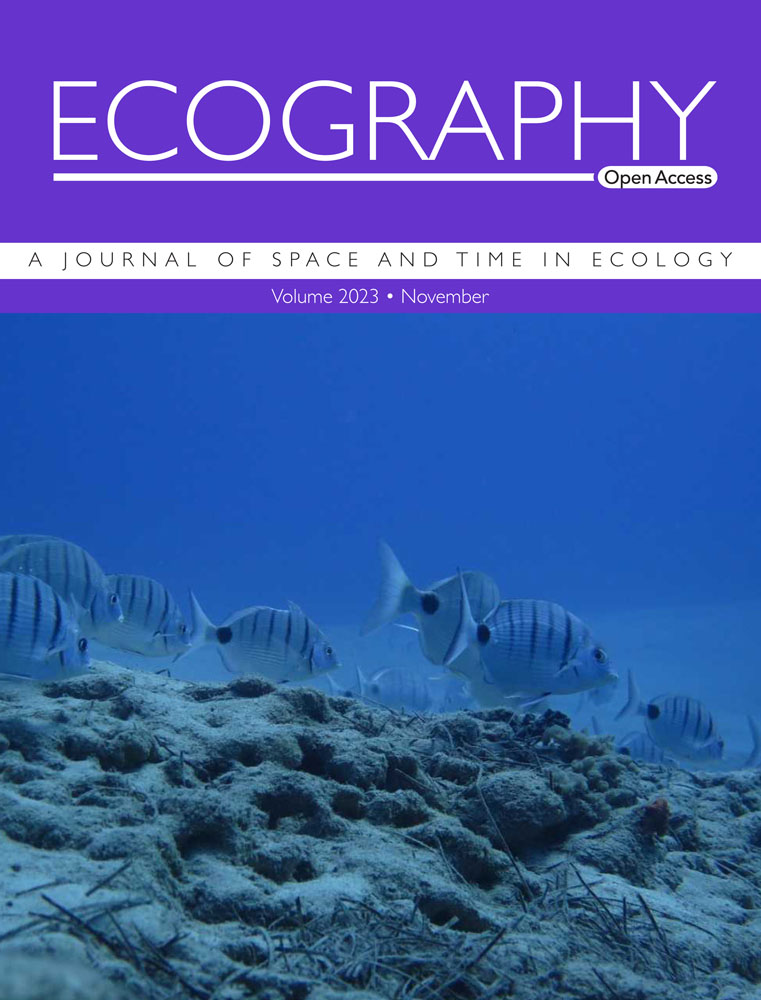Dissecting earthworm diversity in tropical rainforests
IF 5.4
1区 环境科学与生态学
Q1 BIODIVERSITY CONSERVATION
引用次数: 0
Abstract
Tropical rainforests are among the most emblematic ecosystems in terms of biodiversity. However, our understanding of the structure of tropical biodiversity is still incomplete, particularly for certain groups of soil organisms such as earthworms, whose importance for ecosystem functioning is widely recognised. This study aims at determining the relative contribution of alpha and beta components to earthworm regional diversity at a hierarchy of nested spatial scales in natural ecosystems of French Guiana. For this, we performed a hierarchical diversity partitioning of a large dataset on earthworm communities, in which DNA barcode-based operational taxonomic units (OTUs) were used as species surrogates. Observed regional diversity comprised 256 OTUs. We found that alpha diversity was lower than predicted by chance, regardless of the scale considered. Community-scale alpha diversity was on average 7 OTUs. Beta diversity among remote landscapes was higher than expected by chance, explaining as much as 87% of regional diversity. This points to regional mechanisms as the main driver of species diversity distribution in this group of organisms with low dispersal capacity. At more local scales, multiplicative beta diversity was higher than expected by chance between habitats, while it was lower than expected by chance between communities in the same habitat. This highlights the local effect of environmental filters on the species composition of communities. The calculation of a Chao 2 index predicts that as many as 1700 species could be present in French Guiana, which represents a spectacular increase compared with available checklists, and calls into question the commonly accepted estimates of global number of earthworm species.求助全文
约1分钟内获得全文
求助全文
来源期刊

Ecography
环境科学-生态学
CiteScore
11.60
自引率
3.40%
发文量
122
审稿时长
8-16 weeks
期刊介绍:
ECOGRAPHY publishes exciting, novel, and important articles that significantly advance understanding of ecological or biodiversity patterns in space or time. Papers focusing on conservation or restoration are welcomed, provided they are anchored in ecological theory and convey a general message that goes beyond a single case study. We encourage papers that seek advancing the field through the development and testing of theory or methodology, or by proposing new tools for analysis or interpretation of ecological phenomena. Manuscripts are expected to address general principles in ecology, though they may do so using a specific model system if they adequately frame the problem relative to a generalized ecological question or problem.
Purely descriptive papers are considered only if breaking new ground and/or describing patterns seldom explored. Studies focused on a single species or single location are generally discouraged unless they make a significant contribution to advancing general theory or understanding of biodiversity patterns and processes. Manuscripts merely confirming or marginally extending results of previous work are unlikely to be considered in Ecography.
Papers are judged by virtue of their originality, appeal to general interest, and their contribution to new developments in studies of spatial and temporal ecological patterns. There are no biases with regard to taxon, biome, or biogeographical area.
 求助内容:
求助内容: 应助结果提醒方式:
应助结果提醒方式:


